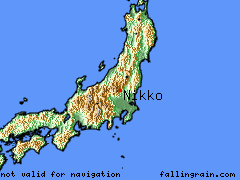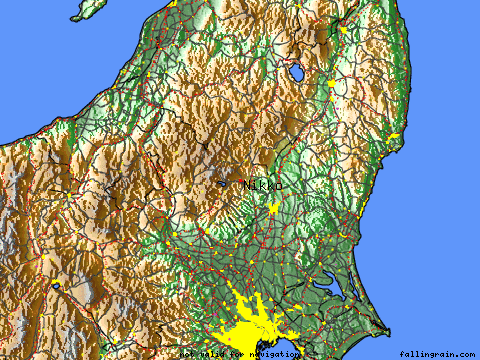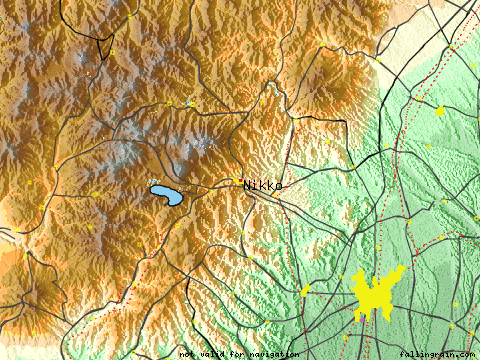Pinguicula ramosa Miyoshi
ex Yatabe
go to : Home
index of species
TAXONOMY:
Family :
Lentibulariaceae
Genus :
Pinguicula
Name : Pinguicula ramosa
Sub-classification
(Casper)
: link
Publication : Miyoshi
ex Yatabe in Bot.Mag.Tokyo 4:1 (1890)
DESCRIPTION :
Perennis.
Rhizoma simplex breve radicibus adventitiis numerosis filiformibus. Folia 5 - 6
radicalia rosulata petiolata circuitu orbiculato-spathulata vel elliptica apice
rotundata margine involuta, superne glanduloso-viscosa laete viridia (8) 10 -12
(15) mm longa 5 - 8 mm lata (petiolo excluso). Hibernacula. Pedicellus erectus
dense glandulosus laete viridis saepe concaulescenter 2 - 3 ramosus (15) 30 - 60
(90) mm altus ramis unifloris. Flores parvi (7) 9 - 10 (11) mm longi (calcari
incluso). Calyx bilabiatus dense glandulosus; labium superum profunde
tripartitum lobis ovato-lanceolatis; labium inferum bipartitum lobis
ovato-lanceolatis usque ad dimidium connatis plus minusve divergentibus. Corolla
bilabiata alba; labium superum bilobum lobis ovato-rotundatis; labium inferum
lobis inaequalibus intermedio lateralibus lgulato-rotundatis multo maiore apice
profunde emarginato vel bilobo basi angustato cum palato vesiculoso. Tubus
brevis albidus infundibuliformis dilatatus pilosus pilis subulatis retro
conversis. Calcar breve conicum rectum luteum (1.5) 3 - 4 mm longum tertiam
partem longitudinis tubi limbique corollae subaequans. Capsula obovoideo-retusa
vel elliptica 2 - 4 mm longa 2 - 3 mm lata calycem multum superans. Semina
scobiformia.
Chromosomata
ignota.
Floret
VI - VII
Holotypus
: Hondo, Mt. Koshin, Japan.
Translation
:
-
soon -
ORIGIN AND HISTORY :
Jurg
Steiger in "Pinguicula (Lentibulariaceae) : The cool climate
species of the northern hemisphere - Morphology, Biology, Cultivation" a
text from the second conference of the International Carnivorous Plants
Society, Bonn (Germany), May 30 - June 1st, 1998 wrote :
"
morphologically I cannot distinguish the
flowers of P. ramosa and P. variegata. Also the stalks, winter
buds and seeds capsules are almost identical. The only difference are the
stalk bifurcation, the lack of the little 'scaly leaf', the different
habitat and the chromosome number of 2n = 18 which is unique in this genus.
Yoshimura (1973) identified the karyogram of P. ramosa to show some
unusually large chromosomes probably resulting from from the fusion of smaller
chromosomes, a phenomenon which is not rarely observed in plants of islands :
low necessity of compeditive variability, i.e. low necessity of chromosomal
exchange, crossing-overs etc. or in banking language : no reason to avoid
'lump risks'."
(more on this theory)
"
I guess that at earlier, cooler times the distribution range of P.
variegata also covered Japan. When the climate was getting milder the
plants in Asia as well as in Japan retired to highe'r altitudes but in Japan
they could not go beyond the summits. Due to an adaptative selection process
and genetical isolation P. variegata might have modified to P.
ramosa. This would be a classical
example where extinction was not avoided by migration but by adaptation."
A
very interested article on Pinguicula ramosa by Michiaki
Mabuchi (Japan) can be read here : article
Localisation / Map:
Pinguicula
ramosa is a species endemic to Japan and can be found in very limited
areas : Mt. Koshin and the neighboring mountains, most of which are in the
Nikko mountain region; Tochigi Prefecture.
|
Nikko,
Japan
Maps
by www.calle.com
|
| Latitude
| 36.75
| Longitude
| 139.6166667
| Altitude (feet)
| 1876 |
| Lat (DMS)
| 36° 45' 0N
| Long (DMS)
| 139° 37' 0E
| Altitude (meters)
| 571 |
|

|
|

|

|
These
include Mts. Kesamaru-san, Nantai-zan, Nyoho-zan, Sukai-zan, Nokogiri-yama,
Tsuki-yama. Nokogiri-yama is a column between Mt. Koshin-zan and Mt.
Sukai-san. Only Mt. Kesamaru is located outside of the Nikko National Park.
Mt. Kesamaru's habitat is important in that it is only one habitat in Gunma
Pref. P. ramosa may also be located on Mt. Ozaku-san, which is also out
of the Nikko Mountain region.
Source
: Michiaki
Mabuchi
HABITAT:
Pinguicula
ramosa grows in mosses on vertical volcanic rock protected from direct
rainfall at altitude of 1500 to 1700 m.
"
Most plants are found on the north side of the walls, under half-shaded or
sometimes very shaded conditions. Saxifraga fortunei and Primula
modesta frequently accompany P. ramosa." (Source
: Michiaki
Mabuchi)
According
to Jurg Steiger, the soil of Pinguicula ramosa is only slightly damp with
periodic fog supplying the majority of water to the plants.
THREATS
:
The
rock walls of Mt. Koshin-zan are so weathered, they are falling apart. Reasons
for this include increased use by mountain climbers and death of the trees on
the wall due to acid rain and grazing by deer. The habitat of P. ramosa
in Mt. Koshin-zan is now facing a crisis. (Source
: Michiaki
Mabuchi)
Pinguicula
ramosa is endangered and therefore a stickly protected species.
Introduction in culture
:
This
species can be found in a very limited number of sources : the carnivorous
plants society of A.Wistuba and in some carnivorous plants growers collections
(2 or 3). This rare plant reach high prices that can explain first why so
little persons try to grow it and why it is so rare in collections even in
skilled growers of temperate Pinguicula.
CULTURE
AND MULTIPLICATION :
(North
hemisphere, France
near Paris, in a garden - see the map
-)
With
the exception of Jurg Steiger that succeeded in growing this species with an
ingenious but expensive cooling system, this species seems to be
"impossible" to be grow by amateurs.
This
species is an alpine plant and need cool temperature all during his growing
cycle that are not possible to offer in our lo altitudes.
Jurg
Steiger gave in CPN (carnivorous plants newsletter Vol. IV, N°1),
temperatures of 6° to 14°C (43° - 57° F) for nights and 10° to 20°C
(50° - 58° F) for days during the vegetation period.
In
his very interested article on Pinguicula ramosa by Michiaki
Mabuchi (Japan), that can be read here : article,
his friend Masato Hattori add the
following cultivation notes :
"
P. ramosa is an alpine plant and is absolutely intolerant to conditions at
lower elevations. It needs special conditions for cultivation. Keep cool, 20
degrees in the daytime, 10 degrees at night. Keep the substrate slightly wet
and periodically mist. Under wet and warm conditions, P. ramosa is
prone to rot. P. ramosa likes cool moving humid air. P. ramosa
seems to prefer half-shaded light. Strong light will increase the temperature,
which can lead to death of the plant. Another important hint may be to plant P.
ramosa vertically. The main difficulty in cultivation is that P. ramosa
is very susceptible to heat. For example, the winter bud sometimes decays
due to warm weather. As well, sometimes plants will put all their energy into
spring growth and die as they do not have reserved to form resting buds. In
conclusion, we have to say that cultivation is far from easy. Although a few
people in Japan successfully grow P. ramosa from seed in vitro, most of
the plants do not survive for long once out of the flask. "
Jurg
Steiger gave also in the same CPN (carnivorous plants newsletter Vol. IV,
N°1), the following media that he is using successfully :
1/2
volcanic detritus - 1/4 black peat - 1/4 perlite.
I
wish to add my own experience one day as my first attempt was a failure, the
plant flowered and rooted few weeks after due to overwatering but it was
during the 2003 heat wave. I used the following media :
1/2 pouzzolane - 1/4 shagnum peat - 1/4 perlite.
PICTURES: (click to
enlarge)
|
.jpg)
The
habitat of Pinguicula ramosa in Mount Koshin, Japan.
Photo : J. Marabini |
.jpg)
Pinguicula
ramosa in Mount Koshin, Japan.
Photo : J. Marabini |
|
.jpg)
Pinguicula
ramosa in Mount Koshin, Japan. Note the famous and unique in this
genus, stalk bifurcation.
Photo : J. Marabini |
.jpg)
Pinguicula
ramosa in culture in Jurg Steiger collection. The plants are cooled
during all the growing season to prevent too hot temperatures.
Photo : E. Partrat
|
-
.gif)
-
The
flower of P. ramosa. A close similarity. A close similarity
with the flower of P. variegata.
-
Photo
: Juerg Steiger
-
-
April 1973 -
|
.jpg)
The
flower of P. variegata. A close similarity with the flower of P.
ramosa.
Photo
: Eric Partrat
-
June 2003 - |



.jpg)
.jpg)
.jpg)
.jpg)
.gif)
.jpg)